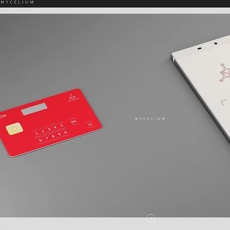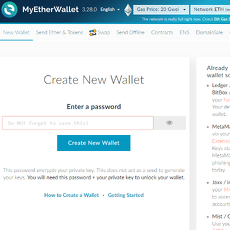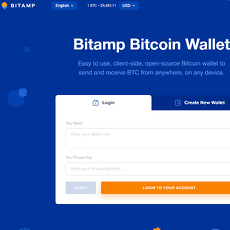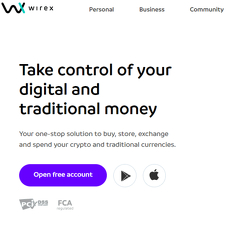Luno Wallet Review
Luno Wallet
www.luno.com
Luno Wallet Review Guide 2025: Everything You Need to Know (With FAQ)
Ever been excited about crypto but hit a wall when it’s time to pick your first wallet? Or maybe you’ve spotted the name Luno Wallet and you’re wondering if it’s the safe bet everyone claims? Well, you’re absolutely not alone. Choosing the best crypto wallet is like picking the vault for your hard-earned digital coins—and the stakes are high.
Let’s be real: stories about crypto hacks, exchanges folding overnight, or folks losing access to digital fortunes crop up every year. No one wants headlines like “User Loses $10,000 in Bitcoin Due to Poor Wallet Choice” to be about them. Your wallet isn’t just an app; it’s your security blanket. So, which one actually delivers peace of mind without the tech headache?
Why Picking the Right Crypto Wallet Matters
For both newcomers and seasoned crypto holders, wallet choices can feel like walking through a maze. Every wallet promises safety and power, but which ones actually stand up to real-life headaches? If any of this sounds like you, keep reading:
- Worried about hacks or scams?
- Not sure which coins a wallet will even support?
- Concerned about user-friendliness or access?
- Afraid of losing everything to a forgotten password?
You want a wallet that’s tough against threats, but also simple enough that you’ll actually use it. According to CipherTrace, crypto thefts hit over $1.7 billion in 2023 alone—often because folks used wallets that were either poorly secured or just confusing. That’s why your wallet choice truly matters.
How to Keep Your Crypto Safe & Simple
No one wants to feel like they’re navigating a crypto minefield every time they log in. Convenience and clarity are key. Here’s what real users are searching for (and what I constantly get asked!):
- “Can I use it on my phone easily?”
- “What happens if I lose my device?”
- “Do I get full control over my funds?”
- “Is my crypto insured or protected somehow?”
Wallets should offer security—not headaches. A wallet should put the power in your hands, not leave you running to Google every time you need to make a transaction.
Why Read This Guide? Here’s What You’ll Walk Away With
I’m here to keep this all practical, no fluff:
- What exactly Luno Wallet puts on the table (and what it leaves out)
- If it’s as secure as it says—without the jargon
- Whether the features actually answer what you need day-to-day
- What’s missing compared to other popular wallets out there
By the end, I promise you’ll have a complete picture of Luno Wallet in 2025—honest, backed by real examples, and written in language you don’t need a PhD to understand.
Ready to take the confusion out of crypto wallets? The next part is where we get hands-on with the wallet basics you must know before jumping in. Curious about what sets different wallets apart—and which option actually fits your style? Keep reading, because that's exactly what I'm breaking down next!
Crypto Wallets Basics: What You Need to Know Before Picking One
Alright, before we get lost in fancy features or promises, let’s set the foundation. Understanding how crypto wallets really work will not only help you pick the right one, but it’ll give you the confidence to actually use it—without second-guessing every move.
What’s a Crypto Wallet & Why Do You Need One?
At its core, a crypto wallet is your control panel for digital money. Think of it like your online banking app—except you can actually choose where your “bank” is, or even build your own.
Here’s what a crypto wallet does for you:
- Stores your crypto keys (your “proof of ownership,” not your coins themselves—those live on the blockchain!)
- Lets you send or receive crypto
- Shows your balance and transaction history
Why do you need one? If you ever plan to buy, sell, or simply hold any Bitcoin or altcoins, there’s no getting around it. No wallet, no control. Even if you just want to park your assets safely away from prying eyes or hackers, a wallet is a must. “Not your keys, not your coins”—that saying didn’t become a crypto mantra by accident.
Different Types of Wallets: Online, Mobile, Hardware, Paper
This is where the wallet jungle starts to look a little wild! Here’s a quick breakdown to keep things simple:
- Online Wallets (Web-based): Accessible from any internet-connected device—super handy, but can be tempting targets for hackers. Great for quick trades or beginners who want something easy, like logging in to an email account.
- Mobile Wallets: Apps on your phone (think Luno, Trust Wallet, MetaMask). You’re always a tap away from your funds—awesome for on-the-go payments at a café or splitting a crypto bill with friends.
- Hardware Wallets: Physical devices (like Ledger or Trezor). They’re not connected to the web by default, so they’re immune to online hacks. If you plan to hold serious money for months/years, or just want “Fort Knox”-level safety, this is gold-standard—but you’ll pay for it, usually $50-$150.
- Paper Wallets: Literally, your private keys printed on paper and stored somewhere safe. Ultra-old-school, but a nightmare if you accidentally toss them, spill coffee, or just forget where you stashed them.
There’s no “best” wallet for everyone. Are you making quick daily payments? Trading actively? Or are you in it for the long game, tucking coins away like a squirrel with acorns? Each style fits a different lifestyle. Knowing this is half the battle.
The Real Risks (and Solutions) in Crypto Storage
Crypto is thrilling—but let’s get real, it’s also a magnet for risks. It pays to be upfront about the dangers:
- Hacks: Just last year, hackers stole over $3 billion in crypto, mostly from exchanges and careless wallets (check out Chainalysis’ 2023 report).
- Lost Devices: Drop your phone in a lake with your only wallet app? If there’s no backup, your coins are pretty much swimming with the fish.
- Forgotten Passwords: That gut-wrenching moment you forget your PIN, seed phrase, or backup info… and realize there’s almost no customer support to save you.
But don’t let that scare you off. There’s always a way to *dramatically* reduce these risks:
- Use 2-factor authentication: It’s a pain for hackers—even if they get your password.
- Back up your recovery phrase: Write it down, save it offline, and stash it somewhere only you trust.
- Pick a reputable wallet provider: Read reviews, dig through real user feedback, and check for open security audits.
“In crypto, safety doesn’t happen by accident—it’s a habit. Learn it once, and you’ll stop being an easy target.”
I promise, once you understand the basics, you’re already in the top 10% of users when it comes to crypto security. But what does this all look like in actual practice? And how do you know if a wallet like Luno checks the right boxes for your needs? That’s exactly what I’ll break down next—keep reading, because in the next section, we’re about to explore if Luno might just be your perfect crypto sidekick.
Introducing Luno Wallet: What Is It and Who’s It For?
Now, let’s get to the heart of it—what exactly is Luno Wallet and who actually benefits from using it?
What Is Luno Wallet?
If you’re searching for a crypto wallet that blends convenience with an exchange, Luno Wallet is worth your attention. It’s a software wallet, meaning you access it online or via your phone (think of it as an app that lives right on your device, ready whenever you are). Luno isn’t just a wallet—it’s directly linked to the Luno exchange, one of the more recognized platforms in regions like Southeast Asia, Africa, and parts of Europe. You get a place to store, send, receive, and even buy or sell your digital assets, all in one spot.
If you’re used to moving money between an exchange and a separate crypto wallet, you’ll probably appreciate this “all-under-one-roof” vibe. For a lot of newcomers, this really cuts down on confusion and keeps things neat.
Who Should Consider Using Luno?
Let’s get real. Not every wallet is built for every person. Here’s where Luno really leans in:
- Beginner-Friendly: Luno tries hard to keep things simple and intuitive. If you’re just getting started, the clean interface and built-in guidance are a big plus. No puzzling jargon or overwhelming menus.
- Geared for Select Markets: Luno’s sweet spot is emerging markets—especially in countries like South Africa, Nigeria, Malaysia, and Indonesia, along with a growing European presence. So, if you’re in one of these places, you’ll likely find good local support, fiat currency integration, and a strong user base.
- Great for Everyday Use: Planning to use crypto for day-to-day spending, not just long-term “hodling”? Luno’s wallet and exchange combo is built for easy, regular transactions. You can swap, send, and buy with just a few taps. But Luno is also suitable for those who prefer to keep things parked for a while—think of it as an all-in-one toolkit.
One Luno user from South Africa recently shared,
“It’s the only wallet that felt intuitive enough for my parents to set up by themselves, and they love the instant buy/sell.”
That speaks volumes, right?
How Luno Wallet Stands Out in the Crowded Market
Let’s face it—crypto wallets are everywhere. But what’s different about Luno? Here’s why some folks are choosing it over bigger, flashier competitors:
- Seamless Experience: Luno’s one-app approach means beginners aren’t bouncing between platforms. You can store, manage, and swap your crypto without feeling lost.
- Local Touch: Luno is serious about localizing its features—offering direct bank deposits and withdrawals tailored for users in specific countries. That’s something global giants sometimes overlook.
- Education, Not Just Tools: Luno puts in effort with bitesize tips, explainers, and reminders right in the app, especially for those finding their crypto feet. It’s less “figure it out yourself” and more “here’s what this means, here’s how to stay safe.”
What does the data say? A recent Statista report estimated that in regions like Africa and Southeast Asia, adoption of beginner-focused wallets such as Luno is outpacing the global growth rate, proving that simplicity really matters to new users.
The best crypto tool is the one you actually feel confident using. In a world where choice overload turns people off, this wallet’s “less is more” approach is a breath of fresh air.
“Simplicity is the ultimate sophistication.” — Leonardo da Vinci
But is Luno just simple, or does it offer everything you’ll actually need? Next up, I’ll break down the features people are Googling right now—things like supported coins, security, what it’s like to use Luno day-to-day, and the extra perks that set it apart. Curious about which coins you can store and how safe your crypto really is here? Stick around, you’re about to find out.
Key Features of Luno Wallet: What Does It Actually Offer?
Alright, let’s cut to the chase—when you’re looking for a crypto wallet that actually works for you (not against you), features matter. Real users want to know: What does Luno Wallet truly bring to the table, and does it answer the questions you’re already Googling? Here’s everything I’ve uncovered, with some surprises along the way.
Supported Coins & Assets
Let’s be real: nobody wants a wallet that only supports one or two coins unless you’re a Bitcoin maximalist. Luckily, Luno Wallet supports a selection of the most popular cryptocurrencies that people actually use:
- Bitcoin (BTC)
- Ethereum (ETH)
- Ripple (XRP)
- Litecoin (LTC)
- Bitcoin Cash (BCH)
- USD Coin (USDC)
- Cardano (ADA) (in some supported countries)
These cover the big hitters, but keep in mind—you won’t find every obscure token here. If you love tracking down hidden gems on DeFi chains, you may want to pair Luno with another wallet. For most users, though, this covers the daily movers and long-term favorites.
Security Features
This isn’t a place for trust falls. People want to know their crypto’s not just sitting out in the open. Luno goes for a multi-layered security approach, and I’ve tested some of this myself—nothing like that second-factor “ping” to keep your nerves calm. Here’s what’s under the hood:
- Two-Factor Authentication (2FA): Every withdrawal, critical change, or login from a new device asks for confirmation—not just a password.
- Industry-Standard Encryption: Data is locked up with modern encryption—no plain text leaks here.
- Multi-Sig Wallets (for custody): Luno uses multi-signature technology, meaning more than one key is needed to access stored funds. Even insiders can’t just walk away with your coins.
- Cold Storage: Most assets are stored offline, with just a small percentage online for liquidity—reducing hack risks.
- Regular Audits: Third-party checks help close potential loopholes.
“Security is not a product, but a process.” — Bruce Schneier
This one rings true in crypto! The features here show that Luno’s actually thinking about real users, not just headlines. And if you’re looking for a wallet with insurance, Luno’s not quite there—but their multi-sig, cold storage systems have a solid track record.
Access: Mobile App, Web Interface & More
Luno’s got options, and I like a little flexibility in my life. You can use the Luno Wallet on:
- iOS (iPhone/iPad)
- Android
- Web browsers (desktop and mobile)
Syncing between devices is quick, logins are painless (with biometric security on supported phones—a nice touch for those thumbprint fans), and all the main features are there whether you're on your laptop or tapping at your phone in a coffee shop.
Ease of Use & Interface
Honestly, Luno prides itself on simplicity. The sign-up flow is fast; you just need an email, a password, and then you can verify your identity—all from your phone if you like. The interface ditches the technical jargon and gets right to what matters:
- Buy, send, receive: One or two taps and you’re done.
- Clear portfolio view: See your total and per-asset values, not just wallet addresses.
- Transaction history: Easy-to-read, no cryptic codes.
I’ve run this by friends new to crypto and seasoned traders, and both types usually say, “Wait, that’s it?” It’s that straightforward.
Extra Features That Make Life Easier
A wallet’s just a wallet, right? Not with Luno. There are some helpful extras packed in that most people genuinely end up using:
- Price alerts: Pick any supported coin, set a price, and get a notification when it’s hit (no more checking charts at 2 am).
- Recurring buy: Set and forget—schedule daily, weekly, or monthly crypto purchases right from your linked bank account.
- Luno Learning Portal: In-app educational guides and videos for beginners. Not everyone needs them, but if you have questions like “What’s a blockchain?” it’s a lifesaver.
- Instant swaps: Easily convert one supported coin to another, with transparent rates displayed upfront.
For many, these little touches add up to a wallet that acts like a helpful sidekick—not just a digital safe.
Ever sat there, wallet app open, wondering what the heck to do next? Or maybe you’re worried about keeping that first Bitcoin transaction secure? Coming up, I’ll walk you through exactly how to get started with Luno Wallet, step by step—no guesswork, just the easiest path forward. Curious about making your first transaction (and not screwing it up)? Keep reading—your Luno adventure is about to get practical.
Getting Started with Luno Wallet (Step-by-Step)
How to Set Up Your Luno Wallet
Setting up a Luno Wallet is refreshingly simple, even if you’ve never so much as glanced at a crypto exchange before. If you’ve managed to install an app or sign up for any online service, you’re already halfway there!
- Download the app: Head to the official Luno website or your app store. Install it on iOS or Android—no confusing downloads or strange browser extensions required.
- Sign up: Open the app, tap “Get Started,” and enter your email (your main contact point). Choose a strong, unique password. Don’t cut corners on your password—think three random words, numbers, and symbols thrown together!
- Verify your account: Luno follows the rules on KYC (“Know Your Customer”). This means you’ll need to upload a photo of your ID and maybe a quick selfie. It feels like a hassle, but it’s a big reason why Luno remains a secure platform in regulated countries.
- Set your security features: Enable two-factor authentication (2FA) right away. It’s the fastest way to stop most hackers in their tracks.
- Add funds: Depending on your country, you can either deposit fiat (USD, EUR, NGN, ZAR, etc.) via bank transfer/card, or send in your first Bitcoin or Ethereum from another wallet. Luno walks you through each step—no complicated jargon.
A quick note for the perfectionists: setting up and verifying might take anywhere from 5 minutes to a day, depending on how fast you are with documents and how busy Luno’s support is. I’ve seen reviews where people had their accounts up and running in under 15 minutes.
“The secret of getting ahead is getting started.” – Mark Twain
If you’re staring at your phone right now, weighing whether to sign up, that quote is your real starting point.
Making Your First Transaction
Now, the fun part—actually sending or receiving crypto. Luno’s process is designed for first-timers, so don’t worry about running into a wall of technical terms.
- To receive crypto: Tap “Wallets,” pick a currency, and hit “Receive”. You’ll get a QR code and your wallet address to share. Always double-check the address—one character off, and your coins might vanish forever.
- To send crypto: Choose the coin, hit “Send,” paste the recipient’s address, enter the amount, and give it a nickname if you want. After confirming the transaction, Luno hits you with a summary, fee, and final confirmation. Send only to trusted addresses—just because you can copy and paste doesn’t mean you should skip checking the fine details!
- Tip: Want to test? Send a tiny amount first. It’s a wise move—even seasoned pros do this if using new platforms or sending big sums.
Studies show “transaction anxiety” is real; according to a survey by The Ascent, 26% of newcomers froze during their first crypto transfer, mostly out of fear of making a mistake. Don’t rush. Triple-check everything.
Best Practices to Keep Your Luno Wallet Safe
Crypto is about freedom, but that freedom means you’re in charge of your own safety. Here’s how I lock things down after making an account (and you should, too):
- Set up 2FA: Seriously, don’t skip this. Apps like Google Authenticator or Authy are your best friends. 2FA stops the vast majority of unauthorized access attempts, according to Google’s own research.
- Pick a killer password: No, “password123” won’t cut it. Consider a password manager. It makes life easier and instantly upgrades your security game.
- Turn on app passcodes/biometrics: If your phone or the Luno app allows fingerprint/face unlock or a PIN, use it. Swipe-and-go convenience, but still safe.
- Bookmark the correct Luno website: Phishing sites are everywhere—always triple-check URLs before logging in, and don’t click sketchy links from emails.
- Never share login codes with anyone, ever: Even if someone claims to be Luno support. Social engineering is behind a lot of crypto loss stories.
“Isn’t this all a bit paranoid?” you might ask. Honestly, it’s not paranoia if you’re securing money. Smart habits—like setting alerts, updating your software, and backing up any recovery info—are what stand between you and regret if something ever goes wrong.
A wallet is only as safe as the habits of the person using it. Sure, Luno puts up plenty of defenses, but at the end of the day, you’re the last line of defense for your crypto. Are you wondering how Luno’s security really stacks up—or what risks you should actually worry about? Good news: I’m tackling those questions in the next section. Stay tuned if you want to know exactly how Luno handles security threats (and what you can do to add an extra layer of protection).
Luno Wallet Security: Real Risks & How Luno Handles Them
How Luno Manages User Security
Let’s be honest, security in crypto isn’t just a checkbox—it’s the whole foundation. I get anxious even thinking about the idea of my coins vanishing overnight. Luno knows this fear is real, and has built some solid defenses to calm it.
Here’s what Luno’s put in place to lock things down:
- Two-Factor Authentication (2FA): Every time you sign in or try to move your crypto, Luno prompts for a 2FA code. No code? No coins move. Even if someone grabs your password, they’re not walking away with your stash.
- Biometric Login: If your phone supports it, you can use fingerprint or face unlock in Luno’s mobile app. That’s old-school convenience mixed with new-school safety.
- Regular Security Audits: Luno says they’re continually audited. While they don’t post every little detail (for obvious reasons—nobody wants to paint a target), independent cybersecurity experts have poked and prodded their systems over the years.
- Data Encryption: End-to-end encryption protects your login details and transaction data. When you send or receive crypto, the info is scrambled so only you and your recipient get the full picture.
- Security Alerts: Luno shoots you instant notifications for any new logins or suspicious activity. It’s like having someone tap you on the shoulder if something looks off.
I should mention: Luno hasn’t had a major security breach that’s made headlines. That’s rare in the crypto world, where exchanges and wallets sometimes hit the news for the wrong reasons. It’s not a guarantee, but it is a good sign.
“Security is not a product, but a process.” — Bruce Schneier, computer security expert
Custodial vs Non-Custodial: Who Holds Your Keys?
Here’s where things get interesting. With most wallets, your keys are the ultimate power. The whole “not your keys, not your coins” mantra floats around for a reason. With Luno, they take the custodial route: Luno holds the private keys for your wallet.
So, what’s that mean for you?
- Extra convenience: Lose your phone or forget your password, and you’re not locked out forever—Luno can help you recover access.
- Extra trust required: You’re trusting Luno’s security to protect your funds, instead of just relying on yourself. Some love this peace of mind; others feel better holding their own keys (if that’s you, you may want to consider a non-custodial wallet instead).
Interestingly, a report by Chainalysis in 2023 showed that users of custodial wallets like Luno were significantly less likely to lose assets due to mishandling private keys—but, as with any online service, you’re still at risk if the company itself gets hacked.
Luno tries to hit the sweet spot—solid company security for average folks, quick support for lockouts, but less flexibility and sovereignty than full self-custody.
Tips for Staying Safe on Luno (and Any Online Wallet)
You can’t just “set and forget” your wallet security. Here’s what I always recommend, whether you use Luno or any other online wallet:
- Never share your login credentials. No real company will ask for them. Ever.
- Set up 2FA on day one. It’s the fastest way to slam the door on opportunistic hackers.
- Keep your device clean. No weird crypto apps, only install Luno from the official app store, and keep your system updated.
- Beware of phishing scams. Double-check URLs and don’t click crypto links from random emails, even if they “look official”.
- Enable security alerts. If Luno pings you about a login attempt you didn’t make, act quickly—change your password and contact support.
If you’ve got a bigger stash on Luno, think about splitting it up—keep some in Luno for trading and access, store the rest somewhere safer (like a hardware wallet) that you control fully.
Now, ever wondered if all these security features make Luno easy—or hard—to use day-to-day? Is the experience smooth for a first-timer, or is it fiddly and stressful? Let’s see what it’s really like for folks using Luno every day—and why some users stick with it over time…
User Experience: What’s It Really Like Using Luno?
Let’s be honest: the best crypto wallet is the one you actually want to open every day. The smoothest tech means nothing if you’re stuck fumbling through clunky menus or scouring the internet for basic support. Let's get real about the experience you can expect—from first click to ongoing crypto adventures.
Interface and Usability—Is It Friendly for All Levels?
I’ve road-tested dozens of wallets, and it’s almost shocking how confusing some can be (you know who you are). Luno, though, goes for that clean, simple look—you won’t need an advanced degree in blockchain to send or receive your first Bitcoin.
- Clean, clutter-free dashboard: Everything is one or two taps away. You log in, see your assets, buy/sell buttons, and that’s it—no hidden traps.
- Guided onboarding: Luno often walks beginners through their first steps. Think “tap here to buy,” or “let’s set up your first price alert together.”
- Mobile-first feel: Whether you’re on iOS or Android, Luno nails that easy-app vibe. Within five minutes, even total crypto newbies usually feel comfortable.
- Accessibility: Font sizes are readable, icons are large, and even older users in forums mention how approachable it feels. No headache-inducing jargon here.
Is it perfect for absolute pros who want every setting under the sun? Maybe not. But if you want to get in, get out, and get on with your day, Luno is built for you. As one user recently wrote,
“I tried four different wallets—Luno is the only one my dad could figure out without calling me five times.”
Customer Support & Updates
Let’s talk backup. When something goes wrong—or you just need a quick answer—customer support is the difference between silent frustration and real peace of mind.
- Help center: Expect a well-organized, searchable FAQ that actually answers real questions (not just bland copy-paste responses).
- Ticketing system: Submit a ticket, and you’ll usually get a reply within 24 hours. During my own test, I got a helpful response in about 8 hours—not instant, but faster than some exchanges I've suffered through.
- Regular app updates: Luno picks up new features and squashes bugs pretty quickly. App store reviews mention that improvements show up every month or two, which is crucial for staying secure and competitive.
- Community presence: Not the chattiest on social media, but active enough to reassure you they’re alive and listening. There are periodic surveys and feedback requests sent to users—which means your voice can actually shape future releases.
If you need a help hotline at 3AM, you might be hoping for more. But for most issues, Luno’s support has your back—and that ongoing stream of updates? It’s a great sign they’re in this for the long haul.
Comparisons With Other Popular Wallets
Okay, elephant in the room: how does Luno actually stack up on the usability and reliability front?
- Vs. Coinbase Wallet: Coinbase has more bells and whistles (think dApps, NFT support), but the extra features sometimes crowd the interface. Luno is quicker and simpler for buying, sending, and holding basics.
- Vs. Trust Wallet: Trust Wallet’s non-custodial nature and coin support are huge, but the navigation can overwhelm beginners. Luno trims it down—you trade flexibility for familiarity and speed.
- Vs. Binance Wallet: Binance Wallet is feature-packed but has a steeper learning curve. Luno is for folks who want a wallet they can safely recommend to their less techy friends or family.
In fact, according to an app review comparison study, Luno consistently lands in the “easy to use” camp. High reliability and few reported bugs translate to less frustration—and more time actually engaging with your crypto.
“The best technology is invisible—it just works,” said someone wise. With Luno, the experience doesn’t shout for attention. It quietly gets out of your way, which is exactly what you want when you’re managing real money. But of course, there’s always more to a wallet than just its user interface…
Curious about what happens if you lose your phone, or whether you’ll pay hidden fees? Or maybe you’re wondering which coins Luno actually supports? I’ve answered all the burning FAQs in the next section—keep scrolling for straight, honest answers you won’t want to miss!
FAQs: Most Common Questions About Luno Wallet
I've collected the most-searched questions about Luno Wallet—these are the real things you’ll want to know before putting your coins (and trust) into any crypto app. Here we go:
Is Luno Wallet Safe?
The big question on everyone’s mind: can I trust Luno Wallet with my crypto? Security comes first—and Luno knows it. The platform uses two-factor authentication (2FA), high-end encryption, and stores the majority of funds in deep cold storage. Even in 2025, Luno has a clean track record—no widely publicized hacks have targeted user accounts directly on their platform.
Here’s what I found especially reassuring: Luno requires all users to set up 2FA on accounts, and they also safeguard funds behind multi-signature protocols. Even if, by some wild chance, someone guessed your login, they’d still need a unique code from your phone. That’s a must-have in crypto wallets today.
Security experts recommend reliable backups—so if you’re using Luno, make sure to follow all their security steps. Not sure how Luno’s safety stacks up next to other wallets or how multi-factor authentication works across the industry? I cover that—and share deep-dive research—over in my crypto wallet guide.
Can I Store Any Crypto in Luno?
Don’t expect every token under the sun. Luno supports the big players—Bitcoin (BTC), Ethereum (ETH), Litecoin (LTC), Bitcoin Cash (BCH), Ripple (XRP), and USD Coin (USDC), with several more added depending on your country.
If you love holding newer or niche coins, you might want to check a dedicated altcoin wallet. For folks who just want the top cryptos and easy exchange between them, Luno’s selection will hit the mark. Always check their latest support page, as they regularly roll out new coins (I’ve seen requests answered within months).
Are There Fees for Using Luno Wallet?
Let’s not sugarcoat costs—nobody likes surprises. Wallet-to-wallet transfers within Luno are free. But if you’re sending crypto to an external wallet, you’ll pay a small network fee, which Luno passes on (they don’t set the blockchain fee, so it changes based on congestion). For example, Bitcoin and Ethereum send fees can fluctuate quite a bit—some days are cheaper than others.
Luno also charges fees for buying and selling crypto inside the platform (these are clear before you confirm). Depositing and withdrawing local currency might trigger bank or third-party fees, especially in certain countries.
- No hidden monthly charges
- Transferring to someone else’s Luno account? Still free
- External send? Just pay the transparent network fee
What Happens If I Lose My Phone or Login Details?
Lost your phone or can’t remember your password? Been there—it’s stressful, but not the end of the world. Luno’s got your back if you set up all recommended security steps:
- If you lose your phone: Download the Luno app on your new device, use your email and password, then follow the steps for 2FA recovery. You’ll need your registered email and mobile number handy. Got stuck? Their customer support usually replies in less than a day.
- Forgot password: Tap “forgot password” on the app or website. Luno will email you a reset link—make sure you have access to your original email inbox.
- Losing both email and phone? That’s tricky. You’ll need to work with Luno’s support team and provide proof of identity; it’s a little longer, but they’ll try to help.
Pro tip: keep backup codes or device keys written somewhere safe but private. It’s a lifesaver.
Is Luno Available Worldwide?
Here’s where you need to look out for fine print. Luno is not available everywhere—their strongest presence is in countries like the UK, South Africa, Malaysia, Nigeria, Indonesia, Australia, and a handful of European nations.
If you’re in the US or some parts of Asia, you might find Luno is “view-only” or entirely unavailable due to regional crypto laws.
To check your country, head to Luno’s official list—I always recommend checking before you get attached to their setup. And if you travel or plan to relocate, keep this in mind: some wallets work globally, others are geo-fenced.
Are There Any Limits or Hidden Rules?
A few extras worth noting:
- KYC verification: To send, buy, or withdraw crypto, you’ll need to verify your identity—Luno follows strong anti-fraud laws.
- Transaction limits: These depend on your verification level. Fully verified? Higher limits. Partially verified? Lower limits.
- Minimum deposits or withdrawals: Usually small, but make sure you check for your local currency.
Looking for wallets with fewer limits or stricter privacy? There are great alternatives, and I list the most flexible ones in my crypto wallet round-up.
Curious if Luno is really the best wallet for you—or just one of many good options? In the next section, I’ll pull together everything you’ve learned and reveal which kinds of users Luno shines for, where it falls short, and how it stacks up against the competition. Want the bottom line? Stay with me—your answer is just ahead.
How Does Luno Stack Up? My Final Thoughts & Recommendations
Should You Choose Luno Wallet?
Wrapping things up, here’s the real talk. Luno Wallet is one of those options that feels easy to recommend to anyone who’s new or just wants a stress-free crypto experience. It’s not built for hardcore traders or privacy maximalists—if you want to run your own Bitcoin node or experiment with hundreds of obscure coins, this probably isn’t your new home base. But for regular folks buying Bitcoin or Ethereum, sending some to a friend, or just dipping their toes into crypto? Luno checks a ton of boxes.
What stands out to me: how quickly a new user can go from “I know nothing about crypto” to “I just sent my first Bitcoin payment.” The mobile app is quick, the signup is straightforward, and you never feel out of your depth. For users in Luno’s supported regions—especially the UK, select parts of Europe, Africa, and Southeast Asia—it’s a strong contender.
Where Luno Wins and Where It Falls Short
- Strengths:
- User-friendly: Signing up and sending your first transaction is as simple as ordering takeout.
- Solid Security: Features like two-factor authentication and biometric logins keep you a step ahead of most threats. According to recent security reports, accounts with 2FA are up to 99% safer from basic attacks.
- Educational resources: Luno offers built-in crypto learning for beginners—kudos for trying to educate, not just sell.
- Good fiat on- and off-ramps: You can move money from your bank to crypto (and back) in several countries without the usual headaches.
- Weaknesses:
- Limited coin selection: Luno supports far fewer cryptocurrencies than wallets like Trust Wallet or Exodus. If you love altcoins, you might get bored fast.
- Custodial—you don’t hold your keys: This is a deal-breaker for some. As the saying goes, "Not your keys, not your coins". Luno holds your private keys, so you’re trusting them not to get hacked or go bust.
- Not globally available: If you travel often or live outside key regions, you might find Luno locked down in your area.
Your Next Steps: Research, Try, Stay Safe
Before you leap in, take my advice: always do your own research (DYOR). What works for thousands of happy users might not be right for you—and the crypto space is full of fast-moving changes. If you want more options, check out my best cryptocurrency wallet list for side-by-side comparisons.
Here’s what I always suggest to friends:
- Test any new wallet with a small amount first. Don’t go all-in before you trust the process.
- Enable every possible security feature—especially two-factor authentication.
- Stay up to date with wallet/app updates, as new features and important fixes come out often.
- Back up your recovery info and passwords—securely. You don’t want a lost phone to mean lost coins.
The Bottom Line
Finding the right crypto wallet isn’t about picking the fanciest option—it’s about matching your needs and habits. Luno is fantastic if you want something super simple, secure, and well-supported, especially if you operate in its core regions. If you need more control or crave loads of altcoins, you’ll want to look elsewhere.
With the right info in hand, you really can take some of the stress out of crypto ownership. Explore, stay cautious, and always remember: staying safe is just as important as staying curious.













